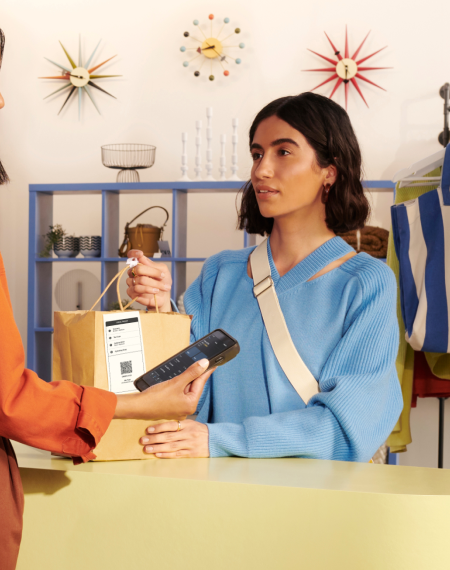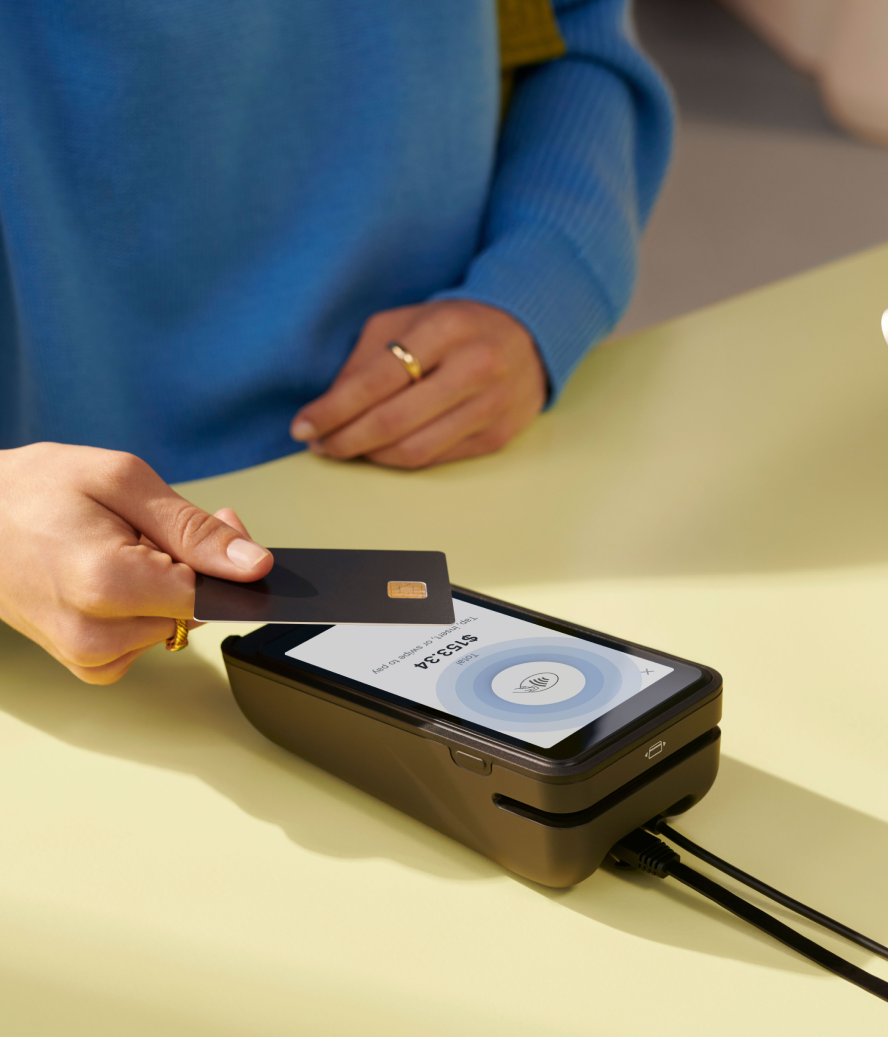There’s no shortage of payment options. Tap to pay, mobile payments, and other contactless payments are possible due to the latest developments in technology.
However, what isn’t as apparent is what makes these payment options possible. Enter payment tokenization.
Whether it sounds like something straight out of a video game or conjures up images of complicated code, getting familiar with the extra level of security tokenization lends to millions of transactions is key to understanding all the benefits that come with it.
In an increasingly digitized world, the need for higher security measures increases accordingly. It’s probably why the tokenization market is forecast to grow to $2.7 billion by 2029.
What is payment tokenization?
Tokenization is a process that protects vulnerable cardholder data by replacing it with a temporary value generated as a series of numbers called a token. The term “tokenize” means to substitute or convert one thing into something else.
The act of tokenizing means replacing sensitive data with nonsensitive data. It’s an effective way to ensure payment data is protected from criminal attempts and risk of data breaches, payment fraud, or cyberattacks.
For example, when you purchase a pair of socks with a credit card, your primary account number(PAN) gets replaced with a randomly generated token that enables a safe transaction. Meanwhile, your real credit card data stays unexposed and stored away safely.
Tokenization vs. encryption
Tokenization replaces vulnerable data like credit or debit card numbers, bank account numbers, routing numbers, or even Social Security numbers with a temporary randomly generated alphanumeric ID as a way to safeguard that data.
Encryption translates data into ciphertext with the use of a key and an encryption algorithm. It’s a way to cloak the data so that only authorized parties have access to it. Despite the difference in each approach, both methods can be effective in safeguarding data through digital transactions.
How does tokenization work?
The good news is that with the right retail POS and other systems in place, tokenization requires no additional resources to execute a secure payment process for thousands, if not millions, of transactions. With today’s innovations in the payments space, it can be broken down into a general four-step payment tokenization process:
1. When you add a card to a payment app, the app creates a token
At the first step of the tokenization process, the customer provides their payment details. This can either happen through an online checkout process or a POS system.
The process is the same whether the transaction is happening online, through an ecommerce payment gateway, or in person through a point-of-sale system.
2. The token is a unique, randomly generated string of characters
Once payment data is entered, the checkout platform generates the corresponding alphanumeric ID or “token.”
So instead of the customer’s transaction being processed with their actual data—say a hypothetical account number of 123 456 789, for example—the tokenization process turns it into something along the lines of HF6223785T7. The latter serves as a representation of the customer’s real data, which is what’s used to verify and finalize the transaction.
3. The token is linked to your original payment information in a secure vault
The token is encrypted and sent to the merchant’s payment processor. Meanwhile, the real payment information is stored in the payment gateway’s “vault” for safekeeping. This is how the payments processor can match the token back to the original payment data.
In the midst of this process, other relevant information is attached to the token. This can be things like the type of payment wallet used, or who the holder of that wallet is.
4. When you make a purchase, the token is used instead of your actual card number.
Once the encrypted token is received by the merchant’s payment provider, the information is once again encrypted before being sent to the corresponding Automated Clearing House (ACH) network for verification.
If the payment is authorized, confirmation of the completed transaction is sent to all parties involved in the process. This includes the merchant, the payment processor, and the customer.
At this point, the customer’s purchase goes through and they can move on to the next steps of the purchasing process, if any. This four-step process is completed instantly, which ups the convenience factor that tokenization offers.
Who uses tokenization for payments?
Many types of businesses use tokenization for payments, including retailers:
- Brick-and-mortar retailers: Securely store customer payment details for faster in-store checkouts, loyalty programs, and contactless payments.
- Ecommerce retailers: Protect online transactions and offer one-click checkouts, stored payment methods, and seamless cross-channel shopping.
- Subscription services: Maintain a card on file to automate recurring transactions while reducing payment failures due to expired or compromised card details.
- Marketplaces: Securely process transactions for multiple sellers while maintaining fraud protection and compliance.
- B2B companies: Enable secure, streamlined invoicing and recurring billing for clients while reducing administrative burdens.
- Restaurants and hospitality businesses: Hotels, restaurants, and travel agencies use tokenization to securely store payment details for reservations, deposits, and contactless checkouts.
- Financial services: Banks, fintech companies, and payment processors leverage tokenization to safeguard transactions and prevent fraud.
Benefits of payment tokenization
The benefits of payment tokenization are plenty. Security, convenience, and speed are the overarching themes around the adoption of payment tokenization.
Faster checkout
These days, speed is of the essence. This is yet another reason why tokenization is so effective: it’s generated instantly, in real time.
Tokenization adds an element of convenience. You eliminate drawn-out security measures can confirm more transactions with ease. Refunds may also be easier to process.
Plus, checking out by using a tokenization process can eliminate the need to enter additional details like shipping information, since it’s already safely associated with your token and is automatically entered when making an online purchase.
💡 PRO TIP: Shopify POS has a fully-customizable checkout experience. Create shortcuts to keep your most-used apps, promotions, and products at your fingertips so you can fly through checkout.
Security
Tokenization can help reduce fraud. The added security benefit goes both ways as both customers and merchants can have peace of mind knowing payment information is handled with the steps necessary to ensure secure transactions.
As a merchant, the more transactions your payment processor handles, the more a need for proper payment tokenization or encryption becomes a priority. This is especially true because merchants tend to be the most vulnerable points of attack for fraud—even more so than the banking institutions being used in the process.
Simpler data management
Payment tokenization makes it easier to store, access, and secure payment data. By replacing sensitive card details with unique payment tokens, retailers can centralize transaction data across all sales channels without compromising security. This reduces the complexity of managing multiple payment methods and allows for reduced risk of breaches.
Plus, it ensures compliance with industry security standards while reducing fraud and chargebacks. With tokenization, retailers can focus on delivering a seamless shopping experience without the burden of handling sensitive customer data and payment information directly.
Unified commerce
Unified commerce brings every sales channel together—online, in-store, social, and mobile—so customers get a seamless experience no matter how they shop. Payment tokenization supports unified commerce by allowing retailers to securely store customer payment details across channels while maintaining a frictionless checkout experience.
With tokenization, customers can start a purchase on one channel and complete it on another without re-entering payment details. Whether they buy online and pick up in-store, reorder via a mobile app, or check out in person using a saved payment method, tokenization ensures a smooth and secure transaction.
For merchants, tokenization streamlines operations by centralizing payment data while maintaining security. It enables a single view of the customer, making personalized experiences—like tailored promotions and customer loyalty rewards—more effective.
But unified commerce is only possible when all channels funnel through a single source of truth. Shopify is the only platform that does this.
Where are tokens used?
Here’s a list of different instances where payment tokenization comes to life.
Recurring payments
Merchants with subscription-based business models often keep a card on file to allow them to process payments and future transactions each time they’re due.
It’s easy to see how a recurring payment business model, like a membership, can be exploited for data to be used in criminal activity. Yet the tokenization process makes recurring payments safe and convenient.
Tokenization helps merchants securely store customers’ payment data for recurring billing without running into security issues. This enables merchants to establish consistent cash flow without interruptions of payment.
One-click checkouts
Today, one-click checkouts are becoming the norm, thanks in part to tokenization technology. Ecommerce and brick-and-mortar businesses alike can use the convenience of one-click checkouts to their advantage by safely storing a returning customer’s data—also keeping the card on file—and enabling them to finalize a transaction with one click.
If you’ve ever shopped at stores like Amazon, you’re probably familiar with their one-click function. It eases the purchasing process, which leads to more sales, a better basket size, and fewer abandoned carts.
Contactless transactions
Have you ever completed a purchase at a contactless POS terminal or card reader in a retail store? You were likely using tokenization as part of the transaction process. Contactless payment options made possible by the creation of mobile wallets are other scenarios in which tokenization ensures a safe transaction with minimal hassle and added convenience.
Mobile wallets like Apple Pay, Samsung Pay, Google Pay, and Android Pay use tokenization to safeguard transactions. Once your personal credit card information is uploaded, the digital wallet sends the data to your card’s network. It’s then in charge of replacing that card data with a token. That token is sent back to your mobile wallet so it can be used to conduct transactions.
If cybercriminals were to get their hands on your tokenized data, it would be useless to them, because it can’t be used for theft or cyberattacks. This is one of the reasons why mobile wallets are so convenient. They make the payment process faster, whether online or in person, without compromising your data.
Shoppers can use mobile wallets for both in-store and online payments.
Guest checkout
Online shoppers might choose guest checkout options. Guest checkout allows them to complete a purchase without creating an account. But without stored payment details, the customer has to manually enter their card information—creating potential security risks.
Tokenization enhances guest checkout security by replacing sensitive credit card data with a temporary token. When a customer enters their payment information, the system generates a unique token that’s used to process the transaction. This ensures that even if a data breach occurs, no usable payment details are exposed.
Over the phone
Some retailers receive orders over the phone, in which case they don’t have a credit or debit card to swipe or scan. Instead, these retailers enter credit card payment information manually to process the transaction. Credit card tokenization ensures this process remains secure by replacing sensitive card details with a token before the payment is processed.
Is payment tokenization right for your retail store?
Payment tokenization is right for any retail store that wants to add an extra level of security to their transactions, whether they’re processed online or in real life. It’s an effective way to increase trust with your customer base and ensure costly data breaches or cybersecurity issues don’t become a problem.
Through the use of tokenization, it’s easier for repeat customers to purchase from you. It’s also a proactive way to establish trust and create a streamlined checkout process customers can count on for safe transactions.
Read more
- What is EMV and Why Should Merchants Use It?
- What is a Shop Till? (+ How to Use One in Your Retail Store)
- EMV Chip Cards are Coming to the U.S. (Here's What Merchants Need to Know)
- Card on File Transactions: How to Process Subscriptions & Recurring Payments on Autopilot
- Chip Credit Cards and Payment Transactions: What Merchants Need To Know
Payment tokenization FAQ
What is meant by tokenization payment?
Tokenization payment is a process in which sensitive payment information, such as credit card numbers, is replaced with a random string of numbers or letters (a "token") that has no meaning outside of the payment system. This token is used to identify the payment and authorize the transaction instead of using the actual payment information. This helps protect the customer's data and makes payments more secure.
What is an example of tokenization?
Tokenization is the process of breaking a string of text into individual words or phrases. An example of tokenization is when a sentence such as "I love ice cream" is broken down into individual words: "I", "love", "ice", "cream".
What is the main benefit of a tokenized payment solution?
The main benefit of a tokenized payment solution is increased security. Tokenization replaces sensitive payment data, such as credit card numbers, with a unique identifier or “token.” This token can be securely stored and used in future transactions, eliminating the need to repeatedly enter sensitive data. By tokenizing payments, businesses can be assured that customer data is kept secure and private.
How does tokenization make online payments?
Tokenization is a process that replaces sensitive payment information with a unique identifier or token. This token can be used in place of the actual payment information, such as a credit card number, when making an online payment. Tokenization helps to protect sensitive payment data and reduce the risk of fraud. It also helps to simplify online payments by making it easier to securely store payment information.





